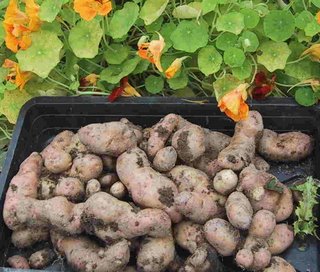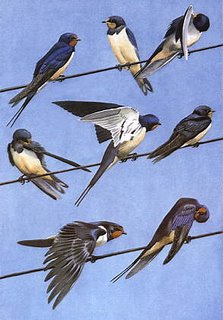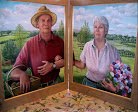In theory, the job for today should be planting a row of first early potatoes. The old tradition was to put them in on Patrick’s day, for an early first harvest in June. But my heavy clay is always too sodden to work, the soil is too cold, and even if the tubers don’t rot, the first shoots can still be cut by frost until mid May. I think the tradition more suited to Wexford than the Midlands, unless global warming changes things. The potatoes are chitting in the greenhouse, but the end of March will do for planting this year.
Frost and snow are forecast, a brief return to winter. But spring races ahead, unstoppable, as the days lengthen to the equinox. The grass I can’t get out to cut grows ever faster. The daffodils along the drive wave cheerfully in the chill wind – old varieties, they came as volunteers in the topsoil when we built the extension. Lavender Iris stylosa sits in a vase on the kitchen worktop. Susanna’s sweet peas reach upward on the windowsills – soon they will need beheading to promote shrubby, branching plants, ready for planting in May. The first blackthorn blooms in the hedge – old Shannon fishing lore says the fly will be up in four weeks to the day in sheltered bays. Fat fruiting buds on the pears are set to burst. And the first leaves are out already on the Amur maple (Acer ginnala), though I expect to find them shrivelled by the frost.
We are told that if you could look at Europe from outer space, you would see a Green Wave moving north across the continent in spring, caused by the buds on the trees and hedges opening. The Green Wave begins in the south in February and moves up across the continent as temperatures rise, at about 160 kilometres per week. If this is true, it should take about three weeks to move across Ireland from Mizen Head to Malin Head, about the same speed as you might walk. School children across Ireland are joining in a mass experiment to check this, by dating locally the first appearance of five signs of the Green Wave:
and leaves opening on three common trees:
Repeated year after year, this can provide a scientific measurement of the effect of global warming. To find out more, see http://www.greenwave.ie/.
The little drama of spring burgeoning in my garden is just a small part of the greater drama of the Green Wave, unfolding across Ireland, Europe and the temperate world. And this is mirrored in the great drama of our Faith. Starting in Lent, Jesus leads his disciples to travel the road to Jerusalem, a road that leads inexorably to the Cross and Resurrection, on to Ascension, and then to Pentecost, when the Spirit bursts forth and changes everything.











